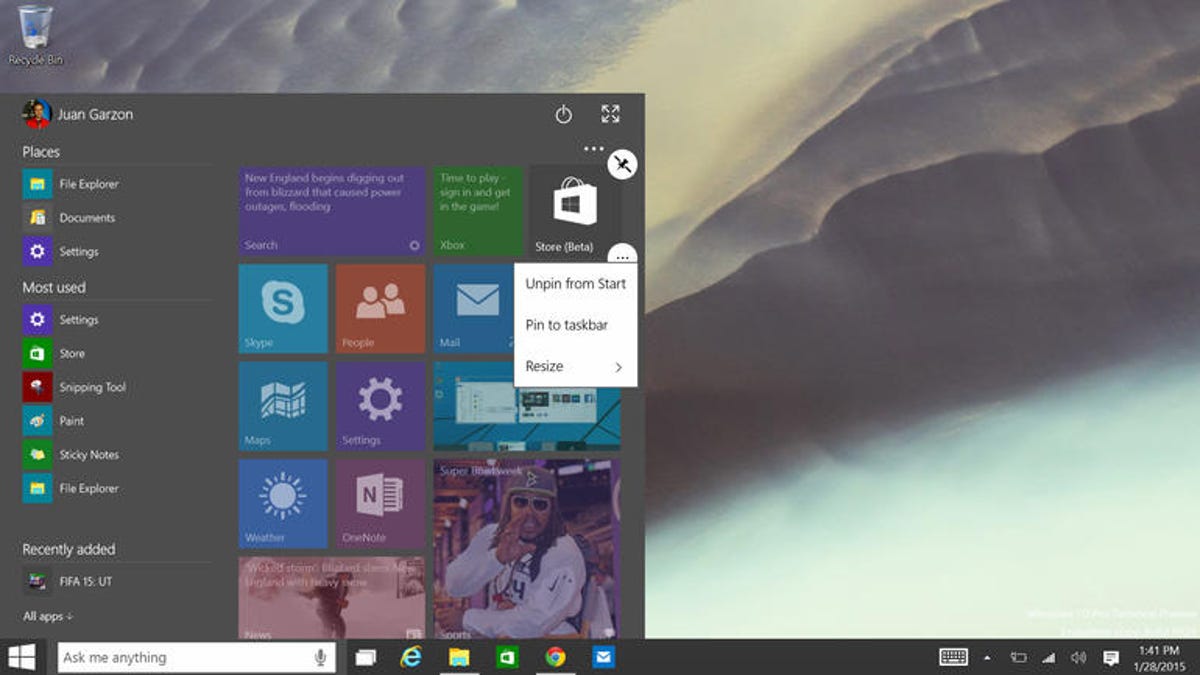Windows 10 upgrades from pirated predecessors won't be legit
Microsoft clarifies its statement about Windows 10 by noting that you can upgrade from a non-genuine version of Windows 7 or 8.1, but that doesn't mean you now have a legitimate version, according to Ars Technica.

Microsoft has clarified a recent comment about owners of unlicensed versions of Windows 7 and 8.1 being able to upgrade to Windows 10.
At the WinHec conference in China on Tuesday, Microsoft's operating system chief Terry Myerson told Reuters that "we are upgrading all qualified PCs, genuine and non-genuine, to Windows 10." The remark was aimed at China where software piracy has been a huge problem for Microsoft. But the news certainly brought smiles to the faces of anyone who runs a non-genuine copy of Windows 7 or 8.1 and suddenly thought that an upgrade to Windows 10 would bring legitimacy.
Windows pirates may need to wipe those smiles off their faces. A spokeswoman for Microsoft clarified the upgrade process to CNET, indicating that the version of Windows 10 doesn't magically become licensed if you upgrade from an unlicensed version:
With Windows 10, although nongenuine PCs may be able to upgrade to Windows 10, the upgrade will not change the genuine state of the license. Nongenuine Windows is not published by Microsoft. It is not properly licensed, or supported by Microsoft or a trusted partner. If a device was considered nongenuine or mislicensed prior to the upgrade, that device will continue to be considered nongenuine or mislicensed after the upgrade.
PC sales may be in a slump and Windows 8 demand has been lackluster, but Windows continues to be one of Microsoft's core revenue generators, both on the consumer and corporate sides. As such, the company obviously loses a chunk of change anytime a non-licensed version of Windows is installed. Pirated versions of Windows have especially been prevalent in China where around 75 percent of PC software is not properly licensed, Reuters said, citing recent studies.
In 2011, then-CEO Steve Ballmer told employees that Microsoft's revenue in China represented only 5 percent of sales in the US, implying that much of its software in China is pirated and unlicensed.
So what exactly happens if you run a non-genuine current version of Windows?
As Microsoft describes the situation on its Genuine Windows page, you'll see frequent messages warning you that your copy of Windows may not be genuine. Your desktop will turn to black. You can reset it, but it will continue to turn black until you activate Windows. You can still get critical security updates, though you may not be able to get optional updates or other software, such as Microsoft Security Essentials. But otherwise, Windows and your applications will still be able to function. Of course, this information applies to the existing versions of Windows 7 and Windows 8 and not necessarily to the still-developing Windows 10.
Microsoft could certain disable non-genuine versions of Windows from running altogether, at least after a certain period of time. But the company then runs the risk of losing users who may not have activated the software or who may decide to pay for it just to eliminate the annoying messages and darkened desktop.
Windows 10 is slated to roll out this summer across 190 countries and 111 languages. The software will be a free upgrade to users running Windows 7 or Windows 8.1.
(Via Ars Technica)
Update, 11:54 a.m. PT: Adds comment from Microsoft.

